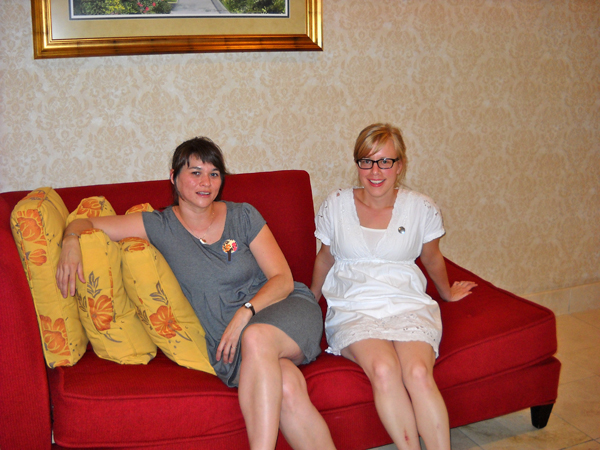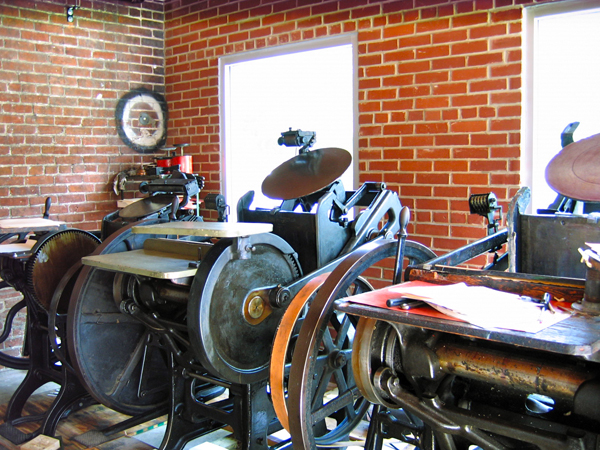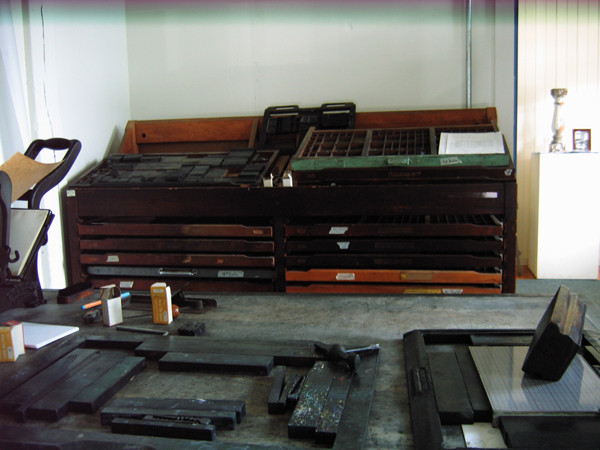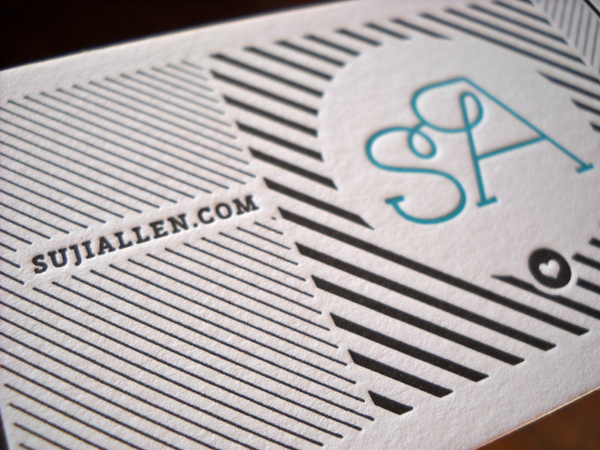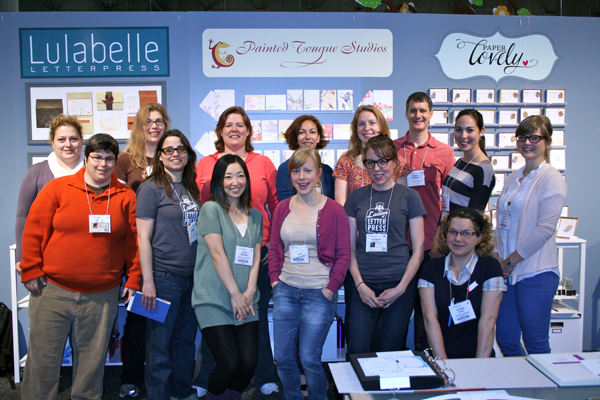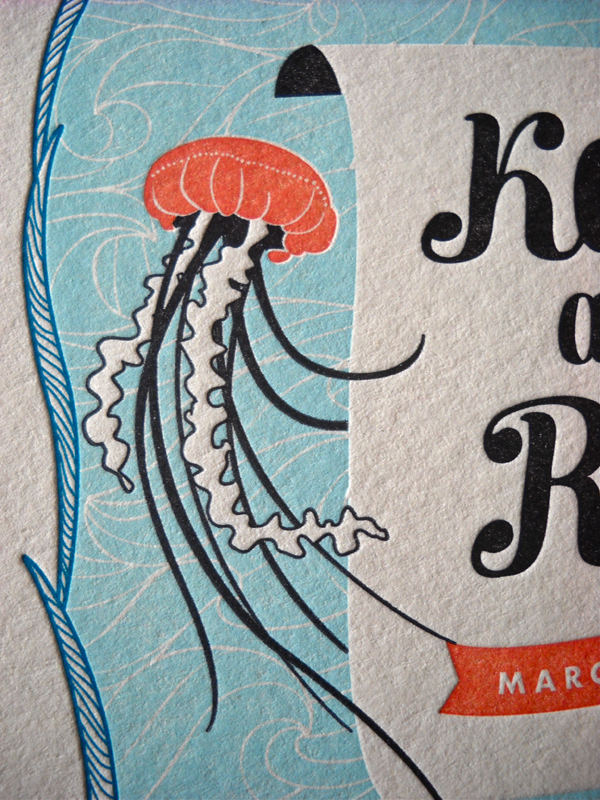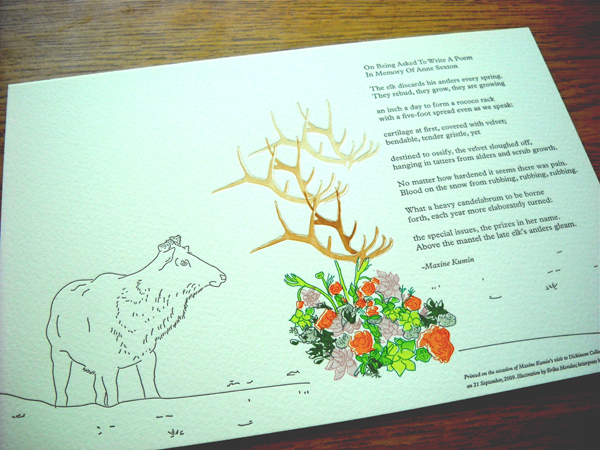Take a large helping of letterpress love, add a smidgen of luck when finding the perfect press, pour in slowly more than a few cups of excellent design experience, add an enchanting creative streak, and you’ve got the divine recipe behind Paprika letterpress + design. Lenor Mirochna lets us in on the flavorful story behind the letterpress and design studio powerhouse. Read on to get the full scoop.

SPICING UP LETTERPRESS Paprika letterpress + design has been an adventure since day one with a serendipitous beginning. Short story about my background: I studied design at a number of different colleges and universities from Detroit to NYC. I began my design career in the mid 70’s; the beginning of computer typesetting where artwork was prepared using rapidograph pens, Xactos, photostats and hand done mechanicals. There is a LOT to be said for the fabulous resources and possibilities of today’s graphic design. My experience has included ad agency design and art direction, owner of several graphic design firms, freelance design, commercial printing sales and print services buyer.

INK IN THE BLOOD I was interested in the process of letterpress and looking for a creative venture where I could use my design skills and love of color. I began to think about a local printer I met about 10 years ago who had a print shop in my town. On a whim, I stopped in one day and asked Dan Dewechter, the owner of Constitution Press, a 120 year old, continuously operating print shop, whether he had any letterpress equipment he was interested in selling. As luck would have it, he did. In fact he was consolidating and liquidating much of his shop having decided to explore other career options.
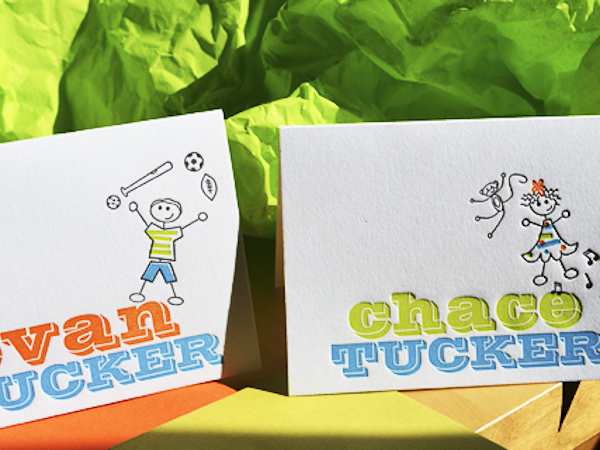
That is where I first met my circa 1916 Chandler and Price 8 x 12 press, all 1250 lbs of iron. Along the way I also contacted Alan Runfeldt of Excelsior Press in Frenchtown, New Jersey. Interested in more hands-on-printing experience, I signed up for a day-long class with Alan and had a blast printing on a variety of presses.
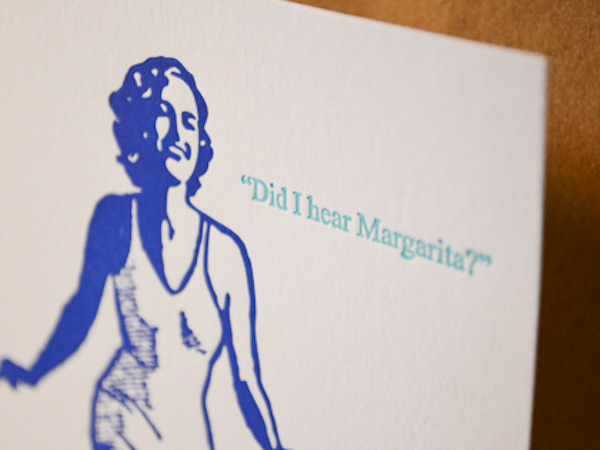
FLOURISHING IN THE GARDEN STATE I am currently set up in a small garage studio. I hired some renovation help and we painted, insulated, refreshed and reorganized the space 6 months ago and now it is much more aesthetically pleasing as well as energy efficient. I am looking to expand my capabilities by purchasing another press by the end of the year.
PRINTING LEGACIES As a printer for over 30 years, Dan Dewechter has a wealth of knowledge and experience that you can’t find in a textbook. He not only worked with me, but also gave me pointers and patiently explained the idiosyncrasies of the process. He was generous with his time, talent and skills and is the person to credit or blame for what I ‘m doing now — right, Dan?

DESIGNED FOR PRINT I design and print. Currently, I am continuing to add to a line of greeting cards, notecards, and soon-to-come calendars. It’s been an adventure exploring the techniques and mechanics of letterpress printing. I have just scratched the surface of custom work and have collaborated with clients on custom pieces which has been extremely rewarding and a ton of fun.
PRINTING FEATS Letterpress printing is a beautifully complex yet simple process. I love the colors, the feeling and the fun exploration of papers and technique. I’m not really sure I’d call it “my life’s work”. I really like it and I’ll see where it takes me.
BOXCAR’S ROLE It was Alan who suggested I check out Boxcar Press to purchase plates as well as acquire more knowledge of the letterpress industry. Frequently posted videos and industry information on the Boxcar website has deepened my letterpress education. All of my plates are ordered through Boxcar Press and they have been an excellent, reliable resource for me.

GETTING STARTED When it was time to get my press, I contacted Dan, rented a trailer, asked my engineer husband to check out the situation and set the moving date.
When I arrived to pick up the press (haha- that’s a good story there) the fun began. (see the pictures) Dan was invaluable and incredibly generous in helping me get my shop set up. Along with the press he gave me just about every possible piece of equipment needed to get started and in fact things I didn’t even know I needed.

Seriously. He included quoins, 3 C &P chases, furniture, sets of guides, large roll of tympen paper, packing sheets, extra set of BRAND NEW rollers still in their box, cans of pre-mixed pantone ink colors, press wash, large “stone” on which to lock up the base, roller puller tool, sticky finger goo and stacks of different types of paper to get me started. And more. And he helped move the press. Dan was amazingly helpful and I like to think he was happy to see the press go to someone who would work it and not sold as scrap.
WHAT’S NEXT My plans for 2012 include adding a new press to my shop, working with more custom clients and continuing to create new pieces for the Paprika letterpress + design line. My retail outlets include stores in Charleston, South Carolina, New Jersey, Philadelphia, and other areas of Pennsylvania. My cards have been featured in Culture Cheese Magazine and soon to be in USEF’s Equestrian magazine. In the future I’d like to grow the Paprika Letterpress brand specifically within the specialty retail and hand-made-art market nationwide.
Many thanks to Lenor for letting us take a look into the wonderful world of Paprika Letterpress + Design!
 The Elements of Typographic Style
The Elements of Typographic Style


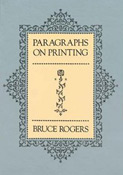
 General Printing: An Illustrated Guide to Letterpress Printing
General Printing: An Illustrated Guide to Letterpress Printing Printing on the Iron Handpress
Printing on the Iron Handpress Finer Points in the Spacing & Arrangement of Type
Finer Points in the Spacing & Arrangement of Type





 Equipment, or toys, to date: 1917 vintage 10 x 15 C&P New Series hand feed; 1930’s vintage 10 x 15 Kluge Automatic; 1954 vintage 10 x 15 Heidelberg Windmill; late 40’s / early 50’s vintage Miehle Vertical V50; 1917 vintage Intertype linecasting machine; 1960’s vintage Ludlow Typograph; 1920 vintage 34 inch Challenge Diamond power paper cutter; 1940’s vintage Challenge floor model paper drill with round corner attachment; 1954 vintage Rosback auto stitcher; and a 1936 vintage 14 x 20 Baumfolder.
Equipment, or toys, to date: 1917 vintage 10 x 15 C&P New Series hand feed; 1930’s vintage 10 x 15 Kluge Automatic; 1954 vintage 10 x 15 Heidelberg Windmill; late 40’s / early 50’s vintage Miehle Vertical V50; 1917 vintage Intertype linecasting machine; 1960’s vintage Ludlow Typograph; 1920 vintage 34 inch Challenge Diamond power paper cutter; 1940’s vintage Challenge floor model paper drill with round corner attachment; 1954 vintage Rosback auto stitcher; and a 1936 vintage 14 x 20 Baumfolder.
 There were a couple of times I was printing one way or the other seven 24 hour days non stop. Take note: The word “work” has not been mentioned. I was having too much fun to classify what I was doing under the category of “work”. Adding to it all, if I was moving printing equipment, well, that was fun in overdrive.
There were a couple of times I was printing one way or the other seven 24 hour days non stop. Take note: The word “work” has not been mentioned. I was having too much fun to classify what I was doing under the category of “work”. Adding to it all, if I was moving printing equipment, well, that was fun in overdrive.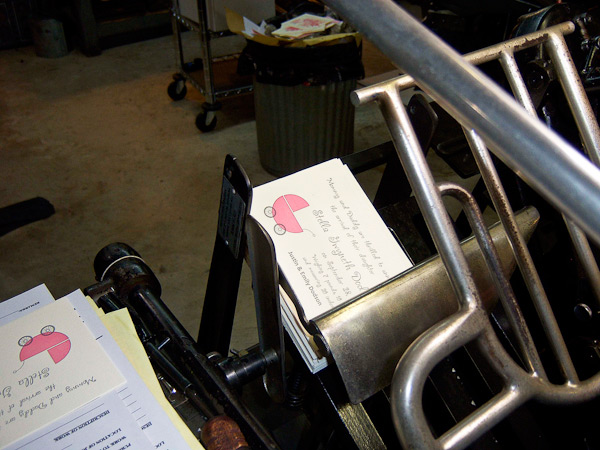 PRINTER’S PRIDE The many letterpress and offset printing production awards ranging from honorable mention to best in category presented by peers in the graphic arts industry. Also, a period of 44 years of moving printing equipment without any kind of mishap.
PRINTER’S PRIDE The many letterpress and offset printing production awards ranging from honorable mention to best in category presented by peers in the graphic arts industry. Also, a period of 44 years of moving printing equipment without any kind of mishap.


 PRINTING LEGACIES I knew when I saw the miniature empire that Jen from Starshaped Press had built that it would be possible for me to do what I envisioned. I wanted the flexibility of creating my own schedule, the satisfaction of having people choose to spend their hard earned money on beautiful things that I design and print for them, plus the ability to take time off for kids when I need to (which will be March, 2012!). Paul Aken too, of course, without whom I would never have acquired any of my equipment and who I credit with helping me move closer to accepting imperfection. Still working on that.
PRINTING LEGACIES I knew when I saw the miniature empire that Jen from Starshaped Press had built that it would be possible for me to do what I envisioned. I wanted the flexibility of creating my own schedule, the satisfaction of having people choose to spend their hard earned money on beautiful things that I design and print for them, plus the ability to take time off for kids when I need to (which will be March, 2012!). Paul Aken too, of course, without whom I would never have acquired any of my equipment and who I credit with helping me move closer to accepting imperfection. Still working on that.


















